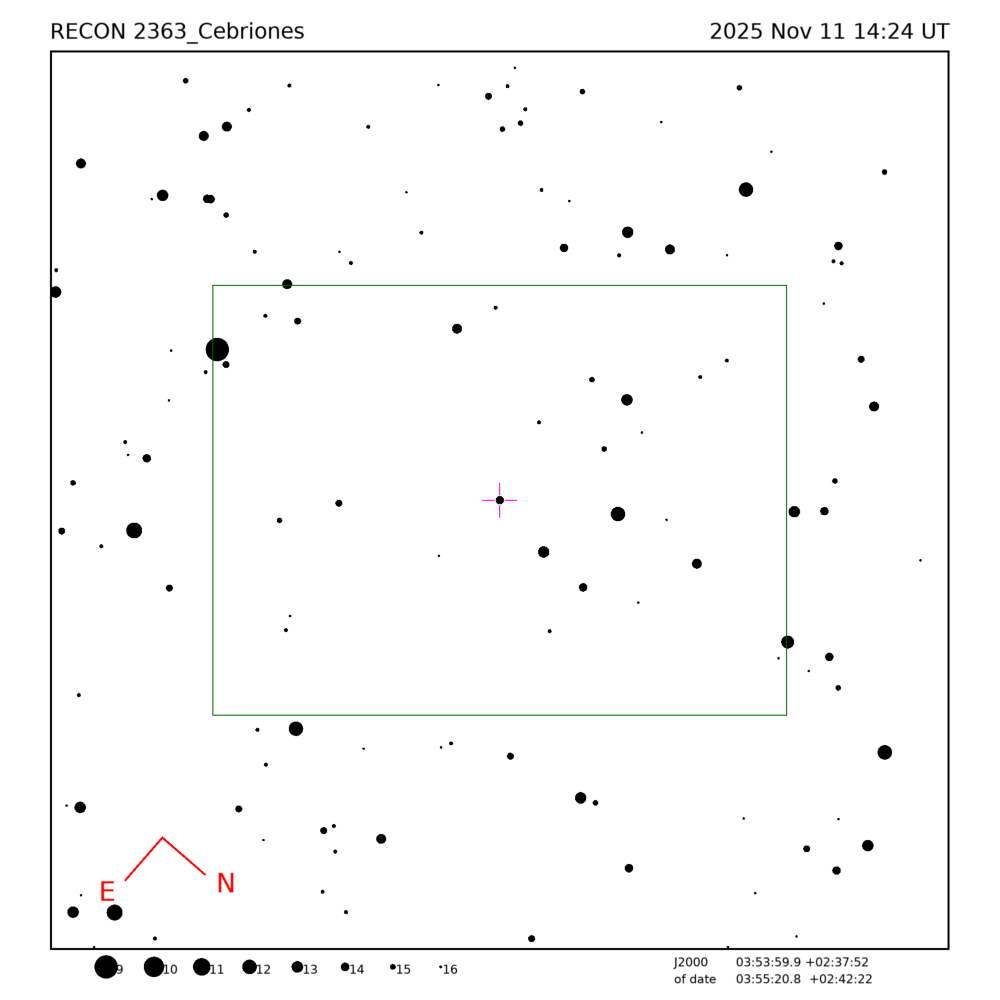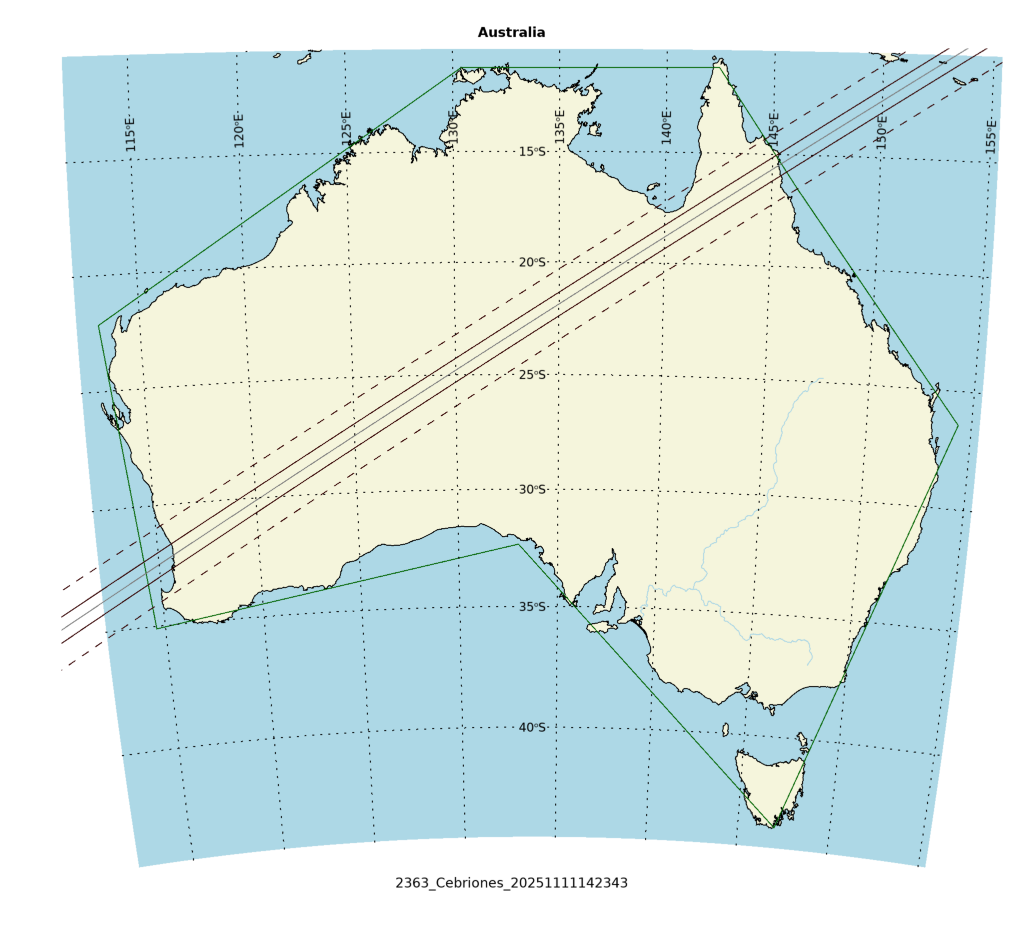
Occultation event with (2363) Cebriones, event index number 1491
Regions able to see the event: Australia
Geocentric closest approach at 2025/11/11 14:23:43 UTC
J2000 position of star is 03:53:59.9 +02:37:52
Equinox of date position of star is 03:55:20.8 +02:42:22
Star is 76 degrees from the moon. Moon is 57% illuminated.
Stellar brightness G=14.4, apparent brightess of occulting body is G=14.1
Use an exposure time of 0.55 seconds with the standard RECON-QHY system.
SNR of 9.7 per integration for unocculted signal
Expected flux drop is 43% with SNR of 4.1 for the occulted depth (per occulted point)
Apparent velocity is 20.1 km/sec on the sky relative to the star, or, 22.4 arcsec/hr.
Position angle of asteroid motion is 56.7 degrees
The recommended exposure time corresponds to 11.1 km per image.
The 1-sigma error in the time of the event is 0.5 seconds.
The 1-sigma cross-track error in the shadow position is 32.0 km.
The sky-plane scale is 3232.5 km/arcsec.
Diameter estimates:
93.8 km assuming a 5% albedo, maximum of 4.7 sec for a central chord
38.3 km assuming a 30% albedo, maximum of 1.9 sec for a central chord
Cross-track diameter of 96.0 km used for deployment plan.
Star training set for 2363_Cebriones, (2025/11/11 14:24UT) Object RA Dec mag sep mel Aldebaran 04:37:24.5 +16:33:33 0.8 17.29 62 Menkar 03:03:38.1 +04:11:23 2.5 12.99 88 PPM 147177 04:05:31.1 +02:53:43 5.9 2.55 74 PPM 147031 03:56:03.1 +02:09:52 8.0 0.57 77 PPM 146991 03:53:55.5 +02:34:23 8.8 0.38 77 2363_Cebriones 03:55:20.8 +02:42:22 14.1 76 Positions are for equinox of date


Star training set for 2363_Cebriones, (2025/11/11 14:24UT) Object RA Dec mag sep mel Aldebaran 04:35:55.4 +16:30:29 0.8 17.29 62 Menkar 03:02:16.8 +04:05:21 2.5 12.99 88 PPM 147177 04:04:10.1 +02:49:34 5.9 2.55 74 PPM 147031 03:54:42.5 +02:05:24 8.0 0.57 77 PPM 146991 03:52:34.7 +02:29:50 8.8 0.38 77 2363_Cebriones 03:53:59.9 +02:37:52 14.1 76 Positions are for J2000